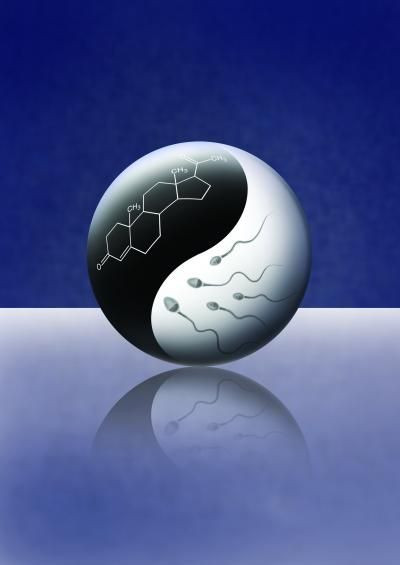Male Infertility Treatment On The Way? New Sperm Cell Membrane Research Could Provide Hope For Your Man's Little Swimmers

Couples who discover they’re infertile understand there’s a 50 percent chance of a malfunction in the male reproductive system and a 50 percent chance of a malfunction in the female reproductive system. For men who find out it’s their reproductive system causing infertility, it’s a real blow to, well, their manhood. Findings from a study presented at the 58th Annual Biophysical Society meeting in San Francisco have identified proteins known as ion channels that could crack the code on male infertility.
"Any knowledge gained in this area may help create much-needed diagnostic testing and treatments for male infertility, which is in essence an idiopathic disease, because at this time 80 percent of male infertility cases can't be diagnosed or treated," Melissa Miller, a postdoctoral fellow who will present the team's findings at the meeting, said in a statement.
Miller and her colleagues Polina Lishko from the University of California, Berkeley, and Yuriy Kirichok from the University of Califonia, San Francisco, are in the process of recording the electrical activity of sperm ion channels in laboratory settings. Ion channels are located in the sperm cell’s plasma membrane and are integral in the process of sperm fertility. Researchers hope their findings can help develop diagnostic tests and treatments for male infertility, as well as new pain management therapies.
"Our labs have characterized three ion channels responsible for regulating calcium (CatSper), potassium (Slo1), and protons (Hv1) within sperm cells," Miller explained. "So far, the most well-studied is the sperm cation channel CatSper, which is exclusively expressed within sperm cells and represents an ideal target for development of a unisex contraceptive; no other cell in the body is known to express this protein."
Previous studies have shown that nongenomic signaling plays a significant role in both human sperm cell activation and pain receptors located on the spinal cord. Through their analysis of the sperm cell’s plasma membrane, researchers claim steroid hormones like progesterone can be used to control the physiological functions of both nongenomic and genomic signaling for men and women.
"We recently reported that the female hormone progesterone activates CatSper via a non-genomic pathway,” Miller said. “In normal fertile spermatozoa, CatSper activity was greatly increased by the addition of progesterone. However, patch clamp recording from patient-derived sperm cells with CatSper deletion showed no response to progesterone nor did they produced basal CatSper current. This shows direct regulation of the CatSper channel in human sperm by steroid hormones."
Miller will present the research team’s findings on Tuesday, Feb. 18, the 3rd of the Biophysical Society meeting. The annual meeting of the Biophysical Society is the largest meeting of biophysicists in the world including over 7,000 researchers working in multiple fields of biophysics. Further research involved with this study will focus on the molecular determinant of both genomic and nongenomic pathways.
"The lack of CatSper activity is strongly correlated with male infertility, so identification of this endogenous signaling molecule would give us a novel biomarker for male fertility that could be immediately used in the clinic as a way to quickly assess sperm fertilization potential," Miller added.
According to the Centers for Disease Control and Prevention, between 3.3 and 4.7 million men under the age 45 in the U.S. and around 7.5 percent of men at their reproductive age have reported visiting a fertility specialist. Among men who visit a fertility doctor, 18 percent are diagnosed with a male infertility disorder, including 14 percent who are affected by sperm or semen-related complications and six percent who suffer from varicocele, swelling of veins in the male scrotum. Infertility can be caused by a range of factors and is usually evaluated via a semen analysis including the number, movement, and shape of sperm.
Source: Kirichok Y, Lishko P, Miller M. Regulation of CatSper Channel through Non-conventional Lipid Signaling. 58th Annual Biophysical Society Meeting. 2014.



























